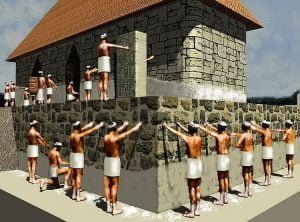Hernando de Soto Expedition to Georgia
The earliest recorded visit of Europeans to the Georgia and North Carolina Mountains was in 1540. De Soto’s Conquistadors spent several summer weeks at the capital of Kvse (pronounced Kău-shĕ in Itsate-Creek, but known as Kusa in English.) Kvse means “forested mountains” in Itza Maya. Florida Indians told Pánfilo de Narváez in 1528 that the Apalachee People, who lived in the mountains many days to the north, mined and traded gold. The people, whom the Spanish called Apalache, called themselves the Palache, which is the Creek word for the Biloxi Indians. This is not general knowledge because the media has … Read more

